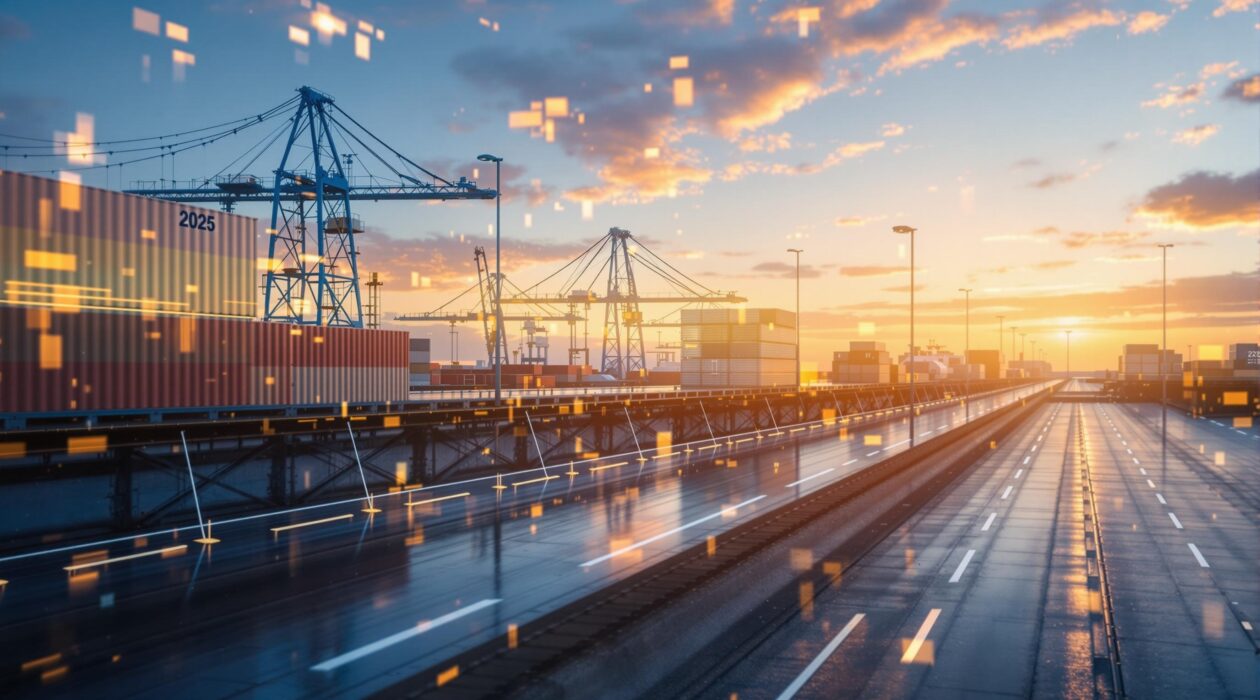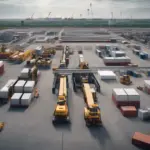Supply chains in 2025 face constant disruption. Companies are stepping up by adopting integrated technologies, diversifying how they source materials, and rethinking their daily operations. These strategies all aim to strengthen resilience and drive sustainable growth. With persistent labor shortages, higher costs, increased demand for transparency, and fresh regulatory hurdles, smart investment in AI, automation, and workforce training has become a must for staying ahead of competitors.
Key Takeaways
- Multi-shoring, precise inventory control, and the ability to quickly adapt to new regulations are crucial for strong supply chains. These measures help counteract both political uncertainty and shifting tariffs.
- AI, automation, IoT, and blockchain now play a central role in supply chain operations. They cut down on forecasting mistakes, boost traceability, and provide major efficiency wins.
- The food logistics industry faces unique pressure. It must fight spoilage, meet tougher rules, and deal with escalating costs. Cold chain upgrades and open sourcing practices offer real solutions.
- Warehousing and transportation are under intense strain. High demand, worker shortages, cost spikes, and pressure on last-mile delivery make automation, solid partnerships, and transportation management system (TMS) investments key for scaling up.
- Adopting integrated technology, circular business models, and a skilled workforce keeps supply chains proactive, sustainable, and prepared for what’s next.
Building Resilient and Competitive Supply Chains
If you are building supply chain resilience and want to secure a competitive edge, invest in technology and the human side of your business. These moves will help you stay nimble, efficient, and compliant in this challenging market.
Geopolitical Shifts and Technology Transformations
Over 90% of U.S. companies now blend near-shoring and far-shoring to build supply chain resilience, carefully choosing between Mexico, Canada, or Asia. This multi-shoring approach allows businesses to minimize disruption from global uncertainties but comes with tough decisions. Shifting production back to high-wage countries often lifts costs by 15-25%. While reshoring may boost reliability, you’ll need to weigh these financial implications closely.
Tariff volatility continues to unsettle the industry, affecting 60% of suppliers. 35% of firms now speed up inventory purchases just to get ahead of new trade policies. Quick moves on inventory often shield businesses from sudden regulatory changes, but this strategy demands tight inventory management to avoid tying up unwanted capital.
AI and Automation: The Game Changers
Artificial intelligence and automation rapidly redefine operations, slashing both errors and waste. These innovations help by:
- Reducing supply chain forecasting errors by 20–50% (as recent reports highlight)
- Lowering overstocking rates by up to 30%, unlocking cash that would otherwise sit idle
- Streamlining procurement, logistics, and production planning processes
With the market for AI in supply chain operations set to hit $20 billion by 2028, it is advisable to prioritize automation and smart decision support systems. Investing in these tools now improves your supply chain’s ability to absorb geopolitical shocks, manage risk, and boost efficiency far into the future.
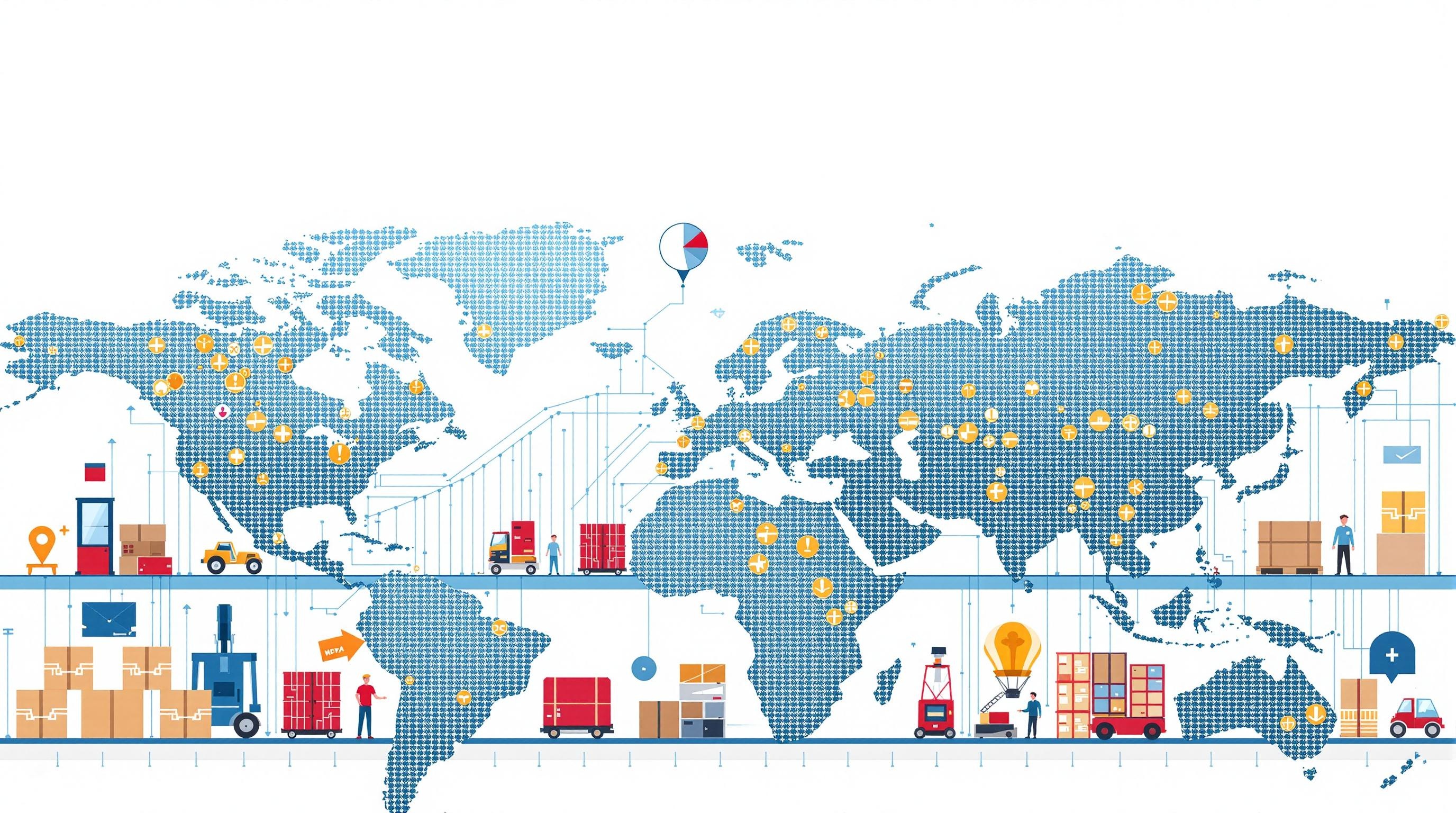
Food Logistics: Perishability, Regulation, and Cost Pressure
Challenges Shaping Food Logistics in 2025
The food logistics industry is growing rapidly, projected to hit $222.4 billion by 2033. Cold chain logistics will skyrocket as well, with forecasts rising from $293.58 billion in 2023 to $862.33 billion by 2032. However, despite these expected gains, the sector faces significant challenges. Poor infrastructure results in 30–40% of food in developing countries spoiling before it even reaches markets. The 2021–22 U.S. baby formula shortage exposed how reliance on just a few suppliers and logistical bottlenecks can put supply continuity at risk.
Regulatory demands also intensify the pressure. As governments continue tightening emissions regulations, 65% of food companies are now utilizing advanced technologies such as blockchain for traceability and IoT sensors for real-time monitoring. Food safety, ethical sourcing, and transparent supply chains have become fundamental expectations, with 70% of consumers now insisting on visible sourcing practices.
Cost Pressures and Sustainable Solutions
Operational costs have surged, especially due to energy market fluctuations and fuel prices—with fuel alone accounting for 35% of food logistics expenses. Further uncertainty is introduced by carbon taxes and volatile energy markets, creating additional challenges for logistics operators.
To address these hurdles, leading firms are taking bold steps:
- Deploying blockchain and IoT to improve food traceability and reduce waste
- Investing in renewable energy; currently, 40% of cold storage sites run on solar-powered refrigeration
- Adopting resilience strategies such as diversifying suppliers and optimizing last-mile delivery
It is essential to focus on transparency and technology investments in order to enhance resilience and sustainability throughout the food supply chain. These efforts can help curb losses and ensure that operators meet rising consumer expectations.

Warehouse and Transport Operations: Capacity, Labor, and Automation
Strains on Capacity and Labor
Soaring e-commerce activity means warehouses are filling up faster than ever—85% of suppliers expect big inventory increases in 2025. Labor shortages further amplify this issue. The U.S. alone faces a 78,000-driver gap, and three out of four employers worldwide struggle to hire. Additionally, warehousing production times have jumped by 27%. These mounting challenges force businesses to rethink workflows, cross-train employees, and explore new recruitment channels.
Automation and Partnerships for Efficiency
Facing these challenges, businesses should consider both automation and third-party support. Robotic systems are revolutionizing order fulfillment, increasing speeds by 300% while slashing labor costs by 30%. However, high up-front costs mean only one in five SMEs can currently access these benefits. Many companies are addressing this by forming partnerships—with 60% of retailers now working with 3PL providers for flexible logistics solutions and to help control costs when inventory surges.
- Rethinking workflows and cross-training employees improves productivity and resilience.
- Automation brings speed and cost savings but requires investment.
- Strategic partnerships with 3PLs offer scalability and expertise without massive capital outlay.
- Employers exploring new recruitment channels can help address ongoing labor shortages.
In summary, capacity and labor challenges are reshaping warehouse and transport operations. By embracing automation and collaborating with experienced third-party providers, businesses can adapt to the rapidly changing logistics landscape and better manage growing inventory demands.
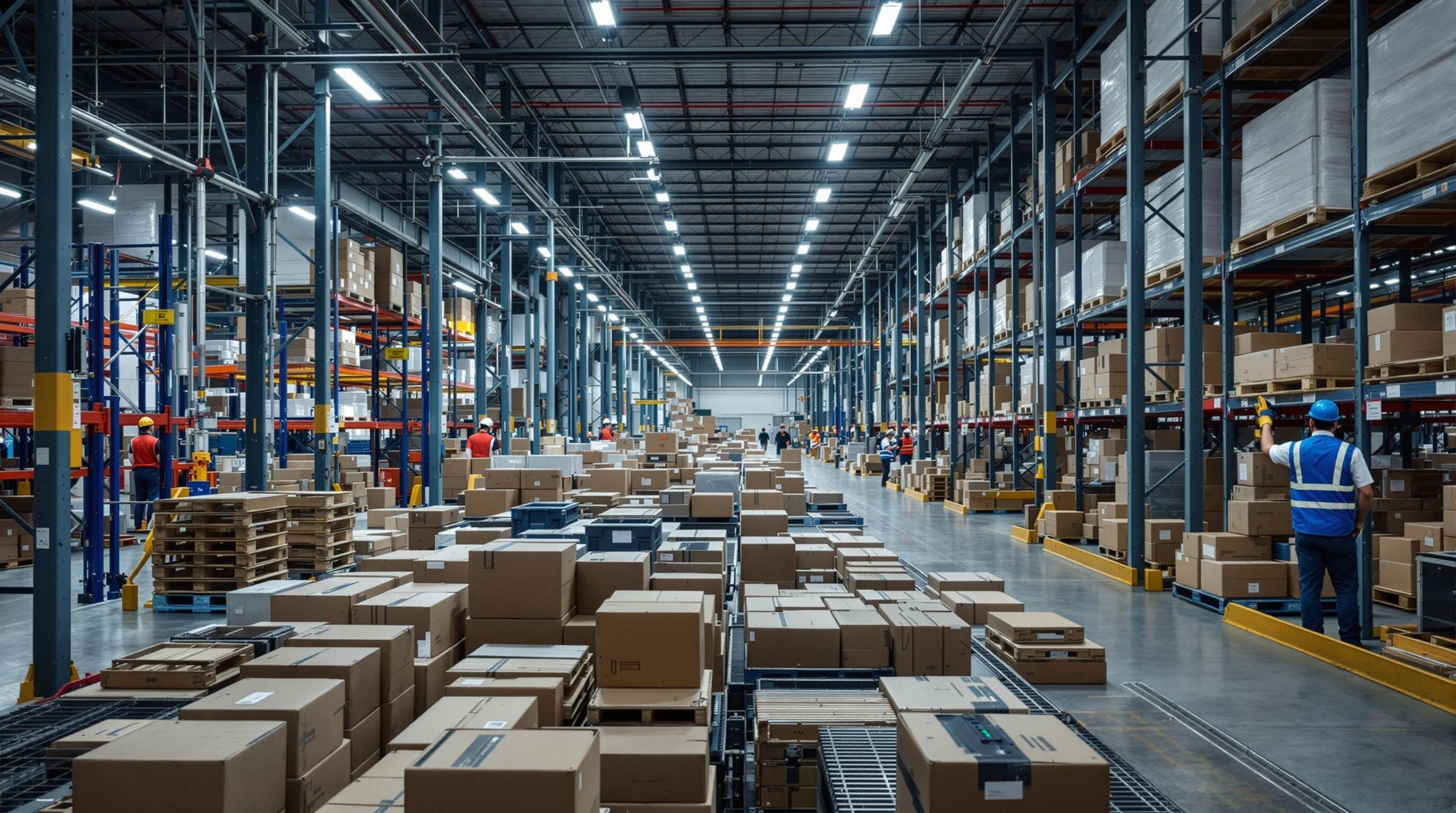
Transportation Costs, Sustainability, and the Last-Mile Challenge
Global road transport CO₂ emissions are set to peak at 9 gigatons in 2025, highlighting the urgent need for sustainable solutions. Electric vehicles (EVs) offer some relief—with the potential to cut emissions by up to 40% in the U.S. and EU by 2030. Yet, the transition is hindered as 55% of logistics operators report inadequate EV charging infrastructure as a significant barrier. Rising fuel prices and an ongoing truck driver shortage add more pressure, pushing operational costs higher for anyone managing supply chains.
Last-mile delivery presents a different headache. As consumer appetite for same-day or next-day fulfillment grows, last-mile costs have jumped by 25%. Meeting such demand quickly escalates expenses, emphasizing the necessity for new strategies.
I recommend focusing on advanced transportation management systems (TMS). Rapid TMS adoption enables route optimization, which typically delivers up to 17% in fuel savings. As the TMS market expands at an impressive CAGR of 17.5% through 2030, the technology has become indispensable for cutting transportation costs and supporting greener operations.
Under the pressure to reduce costs and emissions, urban logistics has started experimenting with these innovations:
- Micro-fulfillment centers that shorten delivery routes
- Drone and autonomous vehicle pilots—now under trial by 30% of major carriers
- Ongoing adaptation, although regulatory uncertainty could impact how quickly drone delivery scales
For those managing supply strategies, embracing TMS and staying alert to last-mile innovations will be key to staying competitive in 2025 and beyond.
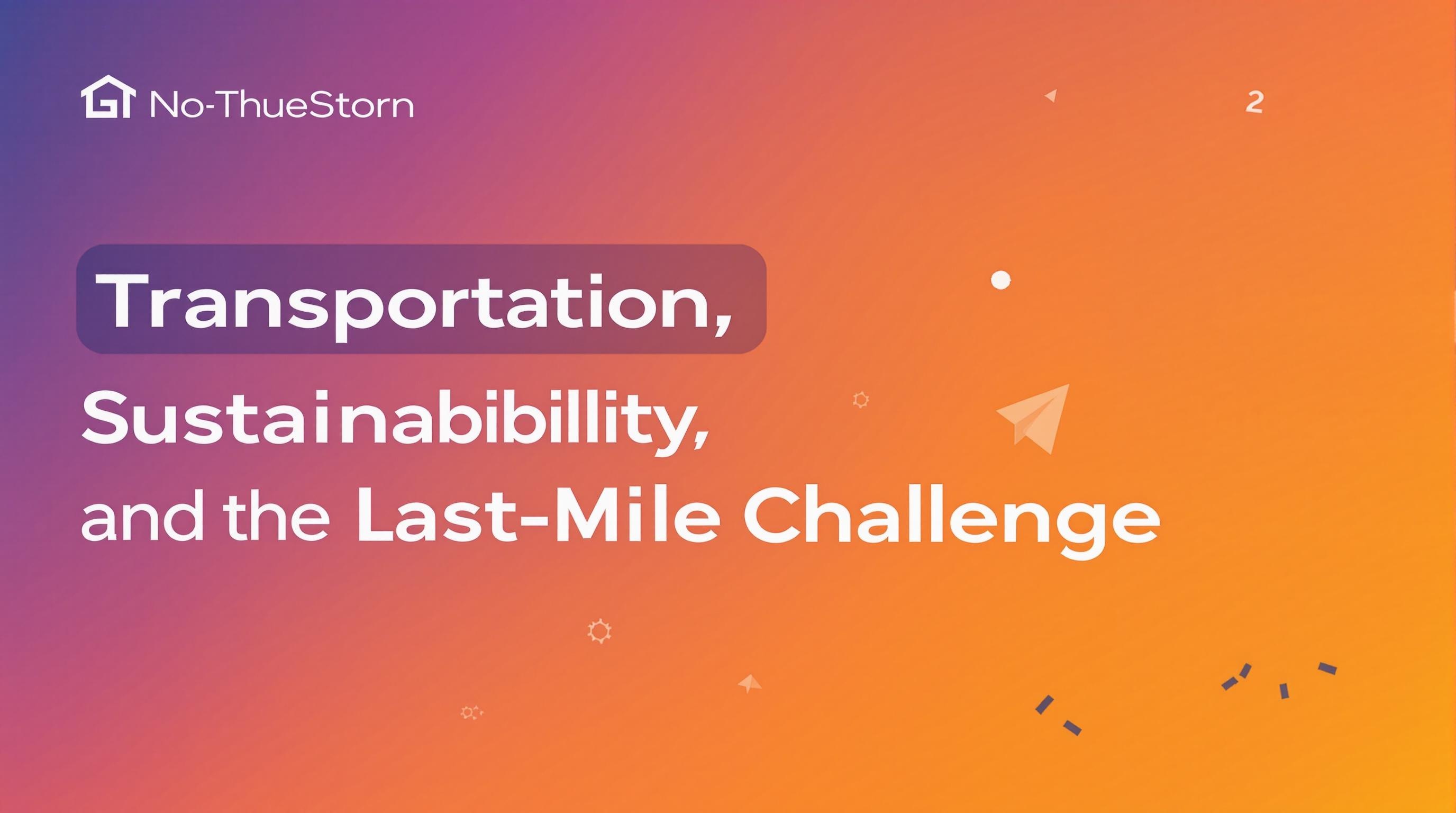
Strategic Paths Forward: Innovation and Integration
Leveraging Integrated Technology for Proactive Supply Chains
Building an integrated technology stack with AI, IoT, and blockchain puts you ahead of disruptions and inefficiencies. Real-time data sharing makes the supply chain proactive, not reactive. AI-driven forecasting identifies potential bottlenecks before they occur, while IoT sensors track inventory levels and the condition of perishable goods throughout transit. Blockchain provides an unalterable record of each step, making traceability simple. With these tools, companies have cut food waste by 20% and boosted warehouse throughput by 35%, creating efficiency gains you can’t afford to ignore.
Embracing Circular Models and Workforce Upskilling
Adopting a circular supply chain model means far less waste. Reusable packaging, coupled with sourcing from local suppliers, reduces your dependence on global supply shocks while slashing procurement costs by 15%.
To stay competitive, focus next on workforce development. Leading companies invest in vocational partnerships and upskilling initiatives, targeting the training of 500,000 supply chain professionals worldwide by 2026. Prioritize programs that build expertise in:
- Automation
- Warehousing
- Transport software
By doing so, you’ll gain a team that’s agile, future-proof, and equipped to maximize new technologies.

Sources:
BSR – The Future of Supply Chains: 2025 and Beyond
University of California, Office of the President – Supply Chain Challenges 2025
NetSuite – 12 Supply Chain Trends and Predictions for 2025
Supply Chain Digital – Top 10 Supply Chain Predictions for 2025
Research and Markets – Food Logistics Market Report
Exploding Topics – Labor Shortage: Causes, Effects & 2024 Forecast
Grand View Research – Transportation Management Systems Market Size, Share & Trends Analysis Report
Food and Agriculture Organization (FAO) – Food Loss Assessments: Causes and Solutions
